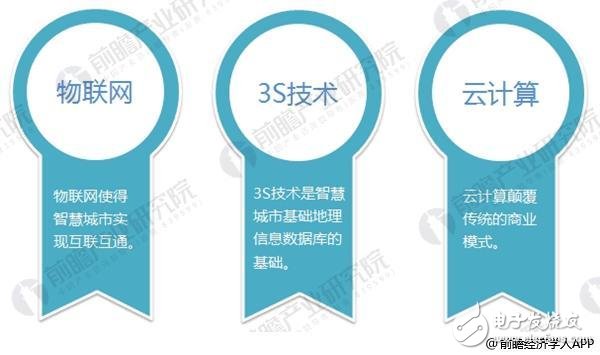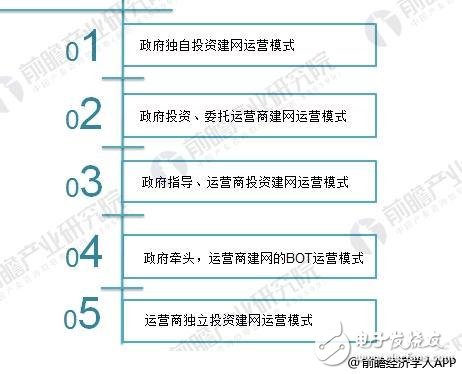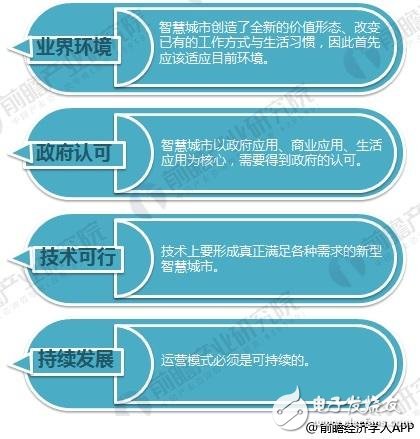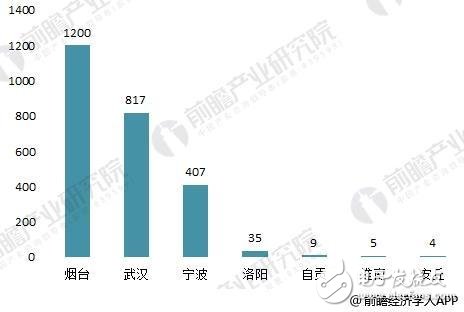(1) Differences in recognition
Although many cities in China have proposed the goal of smart city construction, their understanding of smart cities is very different, and their knowledge still exists only in terms of technology, and there is little mention of the superstructure. The smart city planning in some places does not involve the application of advanced information technologies such as the Internet of Things, cloud computing and triple play, and the technical ideas and models are relatively backward. In addition, the same departments in different regions have different views on the construction of smart cities.
Figure 1: Analysis of the main technical relationships in the construction of the Internet of Things

Source: collated by Prospective Industry Research Institute
(2) Planning is not systematic
The information industry in many cities in China is relatively weak. In terms of informatization construction, no long-term urban development plans have been formulated, nor have relevant informatization construction, management measures for the development of the information industry, and policies, regulations, or standards. The imperfect management system has become the biggest obstacle to the rapid progress of China's smart city construction. However, there are also some smart city norms in China that lack science and authority, and the implementation of smart city planning has not been effectively monitored.
There are still some cities in China that have not formulated unified planning and management standards and basic technology support during the construction of smart cities. Information sharing, data acquisition, and update mechanisms cannot be effectively improved and resolved. There is a lack of a scientific and effective overall structure for smart city construction and It is applicable to the operating modes used in different types of cities.
Exhibit 2: Analysis of smart city operation model

Source: collated by Prospective Industry Research Institute
Figure 3: Conditions of smart city operation model

Source: collated by Prospective Industry Research Institute
(3) Non-standard technical standards
Non-standard core technology standards such as the Internet of Things are also a major obstacle to the construction of smart cities in China. In the construction of smart cities in China, due to the lack of a unified standard, the data format is not unified, which brings great inconvenience to the development of digitalization. China's Internet of Things technology still uses international standards in the high-frequency field. For the core UHF field, its standards are controlled by foreign organizations. If you copy this model, you need to pay a large amount of patent fees, which is not conducive to the development of the company and wisdom. The construction of the city. In addition, the cost of sensor tags is too high, which is not conducive to the application and promotion of Internet of Things technology.
(4) Lack of necessary talents
Since the construction of smart cities in China is relatively late, the construction of the Internet of Things in most cities is not perfect, and technical innovation talents are in short supply, especially senior professional and technical personnel and compound talents who understand technology and government processes and enterprise management are particularly scarce and difficult to achieve The organic integration of management information system with government and city management and operation has seriously affected the operation efficiency and quality of the information platform. The talents that many cities in China lack in the construction of smart cities are mainly regional economics, industrial economics, electronic technology and communications.
2. Problems in the operation of smart cities(1) Great financial pressure
According to calculations by the Ministry of Industry and Information Technology and other relevant government departments, during the “Twelfth Five-Year Plan†period, China ’s investment in smart city construction will be between 500 billion and 1 trillion yuan. Maintain a roughly equivalent investment scale. As the fiscal revenues of various localities are currently facing increasing pressure, while the scale of fiscal expenditures is constantly expanding, the pressure on fiscal funds for smart city construction will increase.
Figure 4: Investment scale of some smart city construction (unit: 100 million yuan)

Source: collated by Prospective Industry Research Institute
(2) Lack of platform for data applications
At present, various local governments have formulated smart city big data application plans. There are many systems developed by various government departments, and there is no common standard between the systems. It is difficult to carry out horizontal integration and sharing. The cross-department sharing and collaboration of government information still has difficulties. Big data The auxiliary support for scientific decision-making is not enough.
(3) Weak industrial pull effect
Currently, most of the smart city projects are directly invested and constructed by the government. There has been no suitable model for attracting the participation of enterprises and social forces. The participation of enterprises and social forces is relatively low, and the industrial pulling effect is weak. In addition, government-led informatization projects and information systems built spontaneously by social forces are relatively fragmented and not well integrated.
This change in the status quo also requires innovations in government mechanisms, government-enterprise cooperation models, etc. to attract companies to build and operate together. Only when enterprises participate in the construction of smart cities, the government can focus more on management and guidance, and give full play to the main role of the market.
The above data and analysis come from the "2018-2023 China Smart City Construction Development Prospects and Investment Forecast Analysis Report" released by the Foresight Industry Research Institute.
DADNCELL 1.5V AAA alkaline batteries are more suitable for long-lasting continuous discharge and high-performance power consumption equipment because of their unique internal component structure, coupled with better battery materials, improved power capacity and electrical performance, and the same model of DADNCELL 1.5V AAA alkaline cell capacity and discharge time, Alkaline battery capacity and discharge time are 4-7 times that of ordinary batteries, and the gap in power discharge performance at high and low temperature is even wider.
At present, all types of cells developed by DADNCELL Labs do not involve any heavy metals in production, are green and can be disposed of with domestic waste.
DADNCELL 1.5V AAA battery advocates a more comfortable and smooth power supply experience for household appliances. Alkaline zinc-manganese dry battery series is suitable for various common household electronic equipment instruments such as smart door locks, infrared thermometers, cameras, flash lights, razors, electric toys, instruments, high-power remote controls, Bluetooth wireless mouse keyboards, etc.
1.5V Aa Alkaline Batteries,1.5V Aa Alkaline Batteries Suitable For Infrared Temperature Gun,1.5 Aa For Camera Instruments,1.5V Lr6 Alkaline Batteries Suitable For Intelligent Door Locks
Shandong Huachuang Times Optoelectronics Technology Co., Ltd. , https://www.dadncell.com